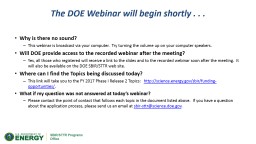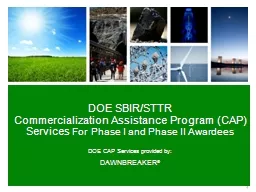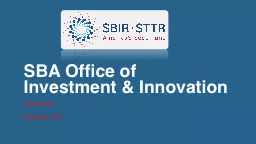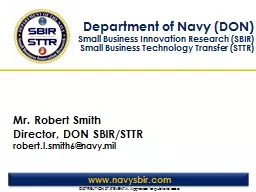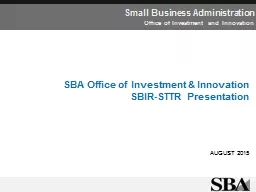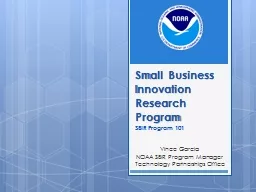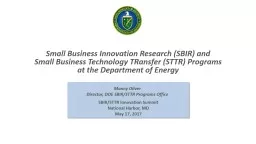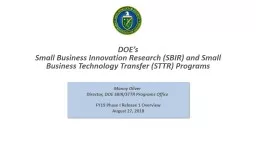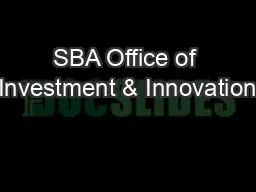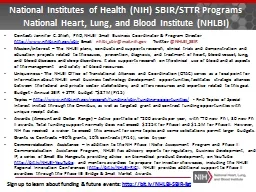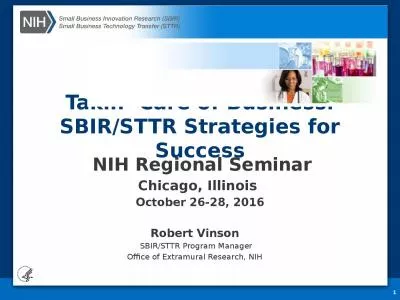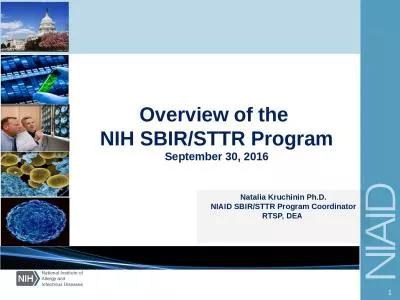PPT-DOE’s Small Business Innovation Research (SBIR) and Small Business Technology TRansfer
Author : esther | Published Date : 2023-05-21
Manny Oliver Director DOE SBIRSTTR Programs Office SBIRSTTR Innovation Summit Austin TX November 30 2016 SBIRSTTR Budgets by Agency FY2015 Agencies with SBIR
Presentation Embed Code
Download Presentation
Download Presentation The PPT/PDF document "DOE’s Small Business Innovation Resea..." is the property of its rightful owner. Permission is granted to download and print the materials on this website for personal, non-commercial use only, and to display it on your personal computer provided you do not modify the materials and that you retain all copyright notices contained in the materials. By downloading content from our website, you accept the terms of this agreement.
DOE’s Small Business Innovation Research (SBIR) and Small Business Technology TRansfer: Transcript
Download Rules Of Document
"DOE’s Small Business Innovation Research (SBIR) and Small Business Technology TRansfer"The content belongs to its owner. You may download and print it for personal use, without modification, and keep all copyright notices. By downloading, you agree to these terms.
Related Documents

